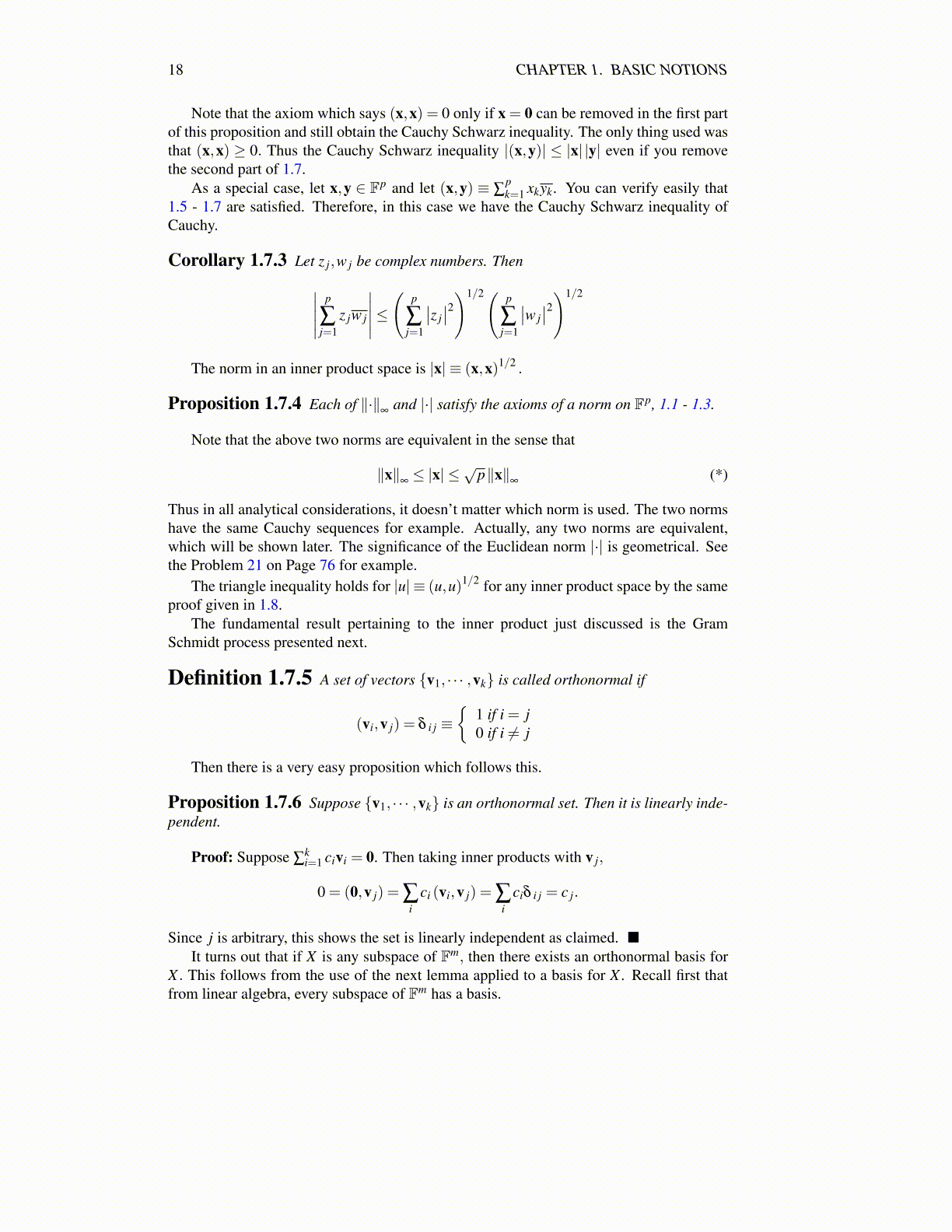
18 CHAPTER 1. BASIC NOTIONS
Note that the axiom which says (x,x) = 0 only if x = 0 can be removed in the first partof this proposition and still obtain the Cauchy Schwarz inequality. The only thing used wasthat (x,x) ≥ 0. Thus the Cauchy Schwarz inequality |(x,y)| ≤ |x| |y| even if you removethe second part of 1.7.
As a special case, let x,y ∈ Fp and let (x,y) ≡ ∑pk=1 xkyk. You can verify easily that
1.5 - 1.7 are satisfied. Therefore, in this case we have the Cauchy Schwarz inequality ofCauchy.
Corollary 1.7.3 Let z j,w j be complex numbers. Then∣∣∣∣∣ p
∑j=1
z jw j
∣∣∣∣∣≤(
p
∑j=1
∣∣z j∣∣2)1/2( p
∑j=1
∣∣w j∣∣2)1/2
The norm in an inner product space is |x| ≡ (x,x)1/2 .
Proposition 1.7.4 Each of ∥·∥∞
and |·| satisfy the axioms of a norm on Fp, 1.1 - 1.3.
Note that the above two norms are equivalent in the sense that
∥x∥∞≤ |x| ≤ √p∥x∥
∞(*)
Thus in all analytical considerations, it doesn’t matter which norm is used. The two normshave the same Cauchy sequences for example. Actually, any two norms are equivalent,which will be shown later. The significance of the Euclidean norm |·| is geometrical. Seethe Problem 21 on Page 76 for example.
The triangle inequality holds for |u| ≡ (u,u)1/2 for any inner product space by the sameproof given in 1.8.
The fundamental result pertaining to the inner product just discussed is the GramSchmidt process presented next.
Definition 1.7.5 A set of vectors {v1, · · · ,vk} is called orthonormal if
(vi,v j) = δ i j ≡{
1 if i = j0 if i ̸= j
Then there is a very easy proposition which follows this.
Proposition 1.7.6 Suppose {v1, · · · ,vk} is an orthonormal set. Then it is linearly inde-pendent.
Proof: Suppose ∑ki=1 civi = 0. Then taking inner products with v j,
0 = (0,v j) = ∑i
ci (vi,v j) = ∑i
ciδ i j = c j.
Since j is arbitrary, this shows the set is linearly independent as claimed. ■It turns out that if X is any subspace of Fm, then there exists an orthonormal basis for
X . This follows from the use of the next lemma applied to a basis for X . Recall first thatfrom linear algebra, every subspace of Fm has a basis.